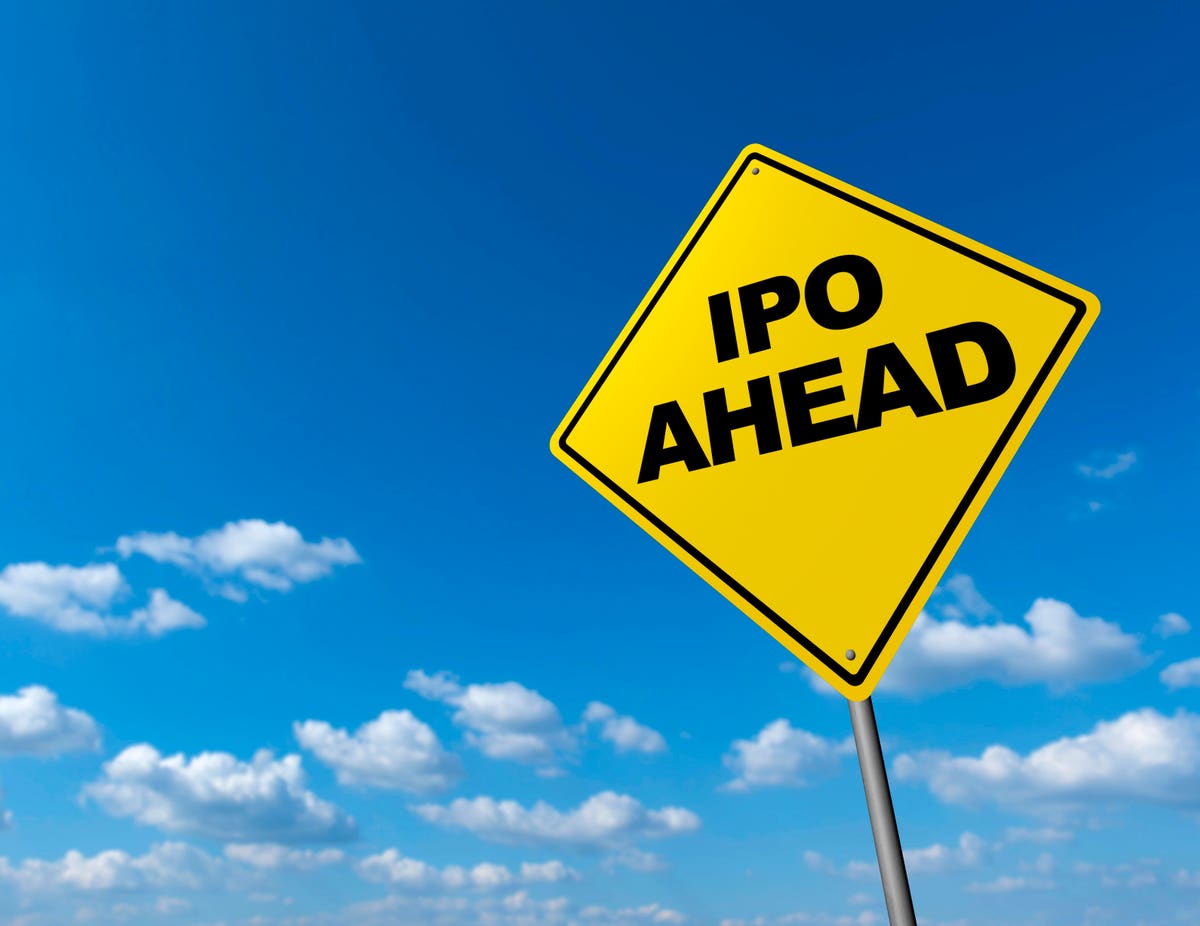Update: Since the original publication of the this article, Arm Holdings has stated they are aiming for a valuation of $52 billion in their initial public offering. SoftBank has said in a regulatory filing that they are offering 95.5 million depository shares at a price range of $47 to $51 per share.
Amid an environment of rising interest rates, tightening consumer spending and market uncertainty, Arm Holdings and its parent company SoftBank are preparing to file one of the most significant IPOs in recent memory. As of August 21, the F-1 has officially been filed with the SEC, so investors can now view the company’s prospectus, MD&A (management discussion and analysis) and financials for themselves. Arm is no stranger to making waves in the investing world: in 2020, Nvidia attempted a takeover deal for the company but this ultimately fell through last year due to intense regulatory scrutiny. While the name may be familiar to tech investors, particularly those involved in the semiconductor space, many may not recognize Arm. Who are they, what do they do in the semiconductor space, and why is their IPO such a big deal? You’ll find those answers here; let’s dive right in.
What Is Arm Holdings?
Arm is a semiconductor company that designs ARM-based processors. “ARM” is an acronym for advanced RISC machines. RISC stands for “reduced instruction set computer,” a special kind of computer architecture created to simplify how computers receive the code that makes them run. The company mainly focuses on CPUs (central processing units), although it has also expanded into GPUs (graphics processing units). ARM-based processors are unique in that they function as an integrated component of the computer’s build itself, rather than being discrete relative to the other hardware. This is called “system on a chip” and is one of the many novel aspects of ARM processors.
Now, if all this information is somewhat difficult to process (pun intended), don’t worry because for the purposes of investing, you can learn what you need to know about this company without requiring a degree in computer science. Suffice it to say that Arm’s products are popular among chip manufacturers because they’re innovative, efficient and cost-effective. The average person may not have heard of Arm, but if they’ve ever used a modern mobile device, then they’ve benefited directly from an Arm processor. They can be found in devices from big names like Qualcomm
QCOM
AAPL
Mispriced stocks are hiding in plain sight and present great investment opportunities for the remainder of 2023. Forbes’ top investment experts share 7 overlooked stocks in this exclusive report, 7 Best Stocks To Buy For The Second Half of 2023. Click here to download it now.
Arm Holdings Key Stats
- 3-year Earnings CAGR: 16.2%
- Average gross margin: 95%
- Current ratio: 2.59 (current assets/current liabilities)
According to the recently filed F-1, Arm’s financials seem to be in a generally healthy place. On a CAGR basis, earnings have grown at a 16.2% clip since 2021; this isn’t particularly breathtaking, but considering how saturated many of the company’s active markets are, this is a respectable figure. COGS (cost of goods sold) and operating expenses all look reasonable and as expected relative to the company’s income lines.
We’ll explain why in the next section, but Arm’s average gross margin in the last three years has hovered near 95%, which is exceptionally high even for a tech company. Of course, that margin gets eaten into at the operational level thanks to R&D and headcount spending; again, this is expected for a tech company, especially one in the semiconductor design space. Arm’s balance sheet is also nothing out of the ordinary. The current ratio is a beefy 2.59, and the company shows no truly pressing line item among its total liabilities. Goodwill is high, sitting at 23% of total assets, but once more, this isn’t unreasonable given the value of the company’s designs.
When considering projections for the future, Arm’s 2023 annual figures look like its most stable and replicable. The market environment these originally materialized in continues to persist, and there are less special/extraordinary items that investors have to account for in their projections (i.e. the income from equity investments that heavily impact the earnings figure in both 2021 and 2022). Overall, Arm’s numbers reflect what most investors likely already understand: this is a “story” stock, so you’re playing the narrative around this company rather than basing your investment on a stringent quantitative argument. The company has a healthy balance sheet, dominant market share, innovative technology and a host of other positives that mean the story around this name is clearly strong.
How Does Arm Holdings Make Money?
An important distinction between Arm and other semiconductor companies is that Arm does not manufacture its products. Instead, Arm makes money by licensing its designs to other firms, which then take it upon themselves to build and implement these processors into their own products.
This is critical to analyzing Arm for two reasons. First, this business model means that the margins and drivers will be quite different relative to peers in the semiconductor space. Second, a licensing approach like this also partially explains why the 2020 Nvidia deal fell through. Given how many major consumer products are driven by Arm processors, a combination of its CPUs with Nvidia GPUs would have given the combined company tremendous oligopic power (or so the argument goes). For investors looking to develop a comparable analysis, you could consider adding the typical semiconductor producers that most investors know: Intel
INTC
For example, TSMC and Intel own their foundries, meaning that they’re the companies that manufacture chips alongside designing them. AMD and Nvidia are popular battleground names, but neither one manufactures their designs (you may have heard the term “fabless” associated with these companies, which is what the term alludes to in this industry). Nvidia also mainly focuses on graphics processing units or GPUs, while others like ARM and Intel focus mostly on CPUs (although they’re both branching out into GPUs), so these companies’ customers and design focuses won’t be exactly comparable. Consider adding Cadence and Synopsys
SNPS
Who Are The Anchor Investors?
First, let’s define an anchor investor. An anchor investor is a strategic supporter of an IPO that buys a stake prior to the IPO’s initiation. The amount bought by the anchor investor is typically a large stake (anywhere from 10% to 50% of the issued shares) and these investors are often major players in the industry that the IPO is taking place in. So essentially, the anchor investor provides two types of support: financial and psychological. The valuation of an IPO is supported thanks to the purchased shares, and the IPO decision itself is validated by having the anchor investor’s involvement.
The anchor investors in the Arm deal are a who’s who of A-list tech companies. The list below is what has been reported so far of Arm IPO anchor investors:
- Alphabet
- Samsung
- Apple
- Microsoft
MSFT
- TSMC
- Intel
- Nvidia
Note that the majority of these investors are unconfirmed as of the time of writing, but this will change as we get closer to the IPO date. But what’s clear is that both Arm customers and Arm competitors want to be involved with this event.
Mispriced stocks are hiding in plain sight and present great investment opportunities for the remainder of 2023. Forbes’ top investment experts share 7 overlooked stocks in this exclusive report, 7 Best Stocks To Buy For The Second Half of 2023. Click here to download it now.
When Is Arm’s IPO Date?
Early September is what has been reported for Arm’s IPO, although a more precise date should be available soon now that Arm’s F-1 has been filed. However, per the filing, the date is “As soon as practicable after this registration statement becomes effective.”
How To Buy Into Arm’s IPO
Buying into Arm’s IPO will be as straightforward as buying shares in already listed companies. As long as you have a brokerage account with access to the market that the company is going to be listed on, you can typically buy shares once that market opens on the day of the IPO. In Arm’s case, the Cambridge, England-based company’s American depositary shares (or ADS) will be listed on the Nasdaq and the ticker will likely be ARM. However, some brokerage firms may restrict newer or less liquid investors from buying into IPOs, but that will vary from firm to firm. The execution of the trade itself is also a factor to consider. This IPO’s incredible visibility means that the average retail investor may not pay the price at which they place their buy market order, so consider this in any projected upside.
Final Thoughts
The final thought on buying into Arm’s IPO (or any popular IPO really) is a simple warning. In recent history, IPOs have shown positive returns on the first-day of the company trading. But the anchor investors, underwriters and other deeply involved institutions are typically beholden to a lock-up period, so they won’t be trading their shares until several weeks or months following the IPO. This means that the average retail investor will likely be trading against anyone ranging from other retail investors to funds that specifically target events like this to try to secure this return in the immediate period after the IPO launch. So keep in mind that there are plenty of active market participants out there with enough capital and influence to impact the trading around Arm’s shares. This event will be at the top of financial news cycles, but don’t let FOMO be the reason you’re left holding the bag after the first trading day. As with any security, do your own due diligence before you invest.
Mispriced stocks are hiding in plain sight and present great investment opportunities for the remainder of 2023. Forbes’ top investment experts share 7 overlooked stocks in this exclusive report, 7 Best Stocks To Buy For The Second Half of 2023. Click here to download it now.
Read the full article here













Leave a Reply